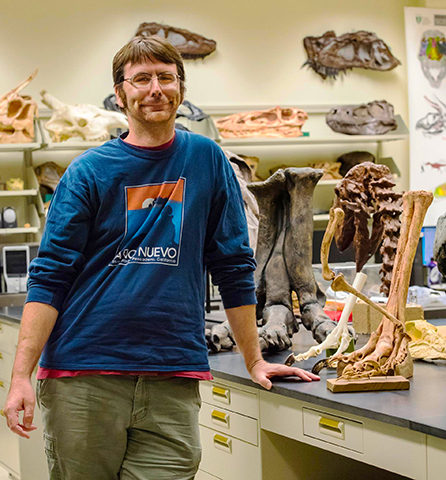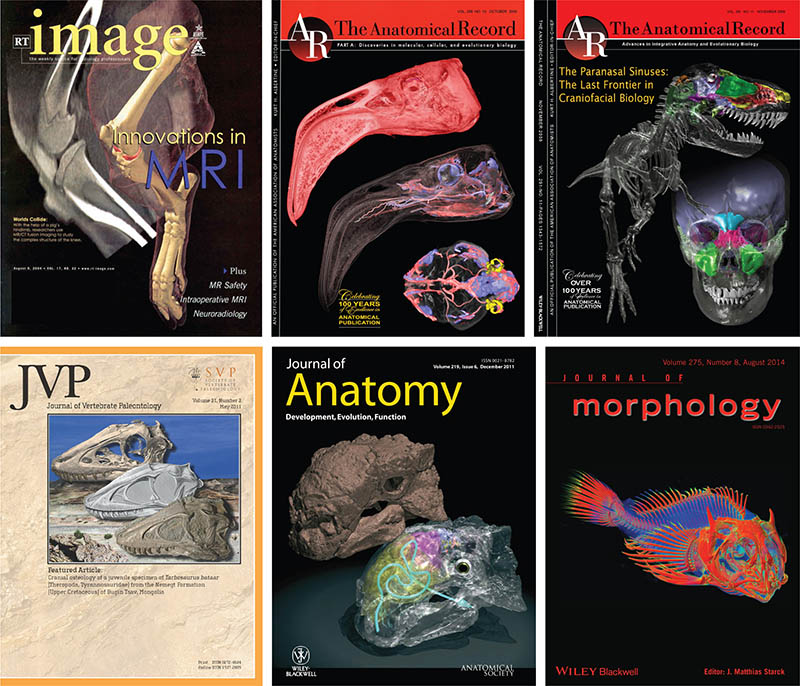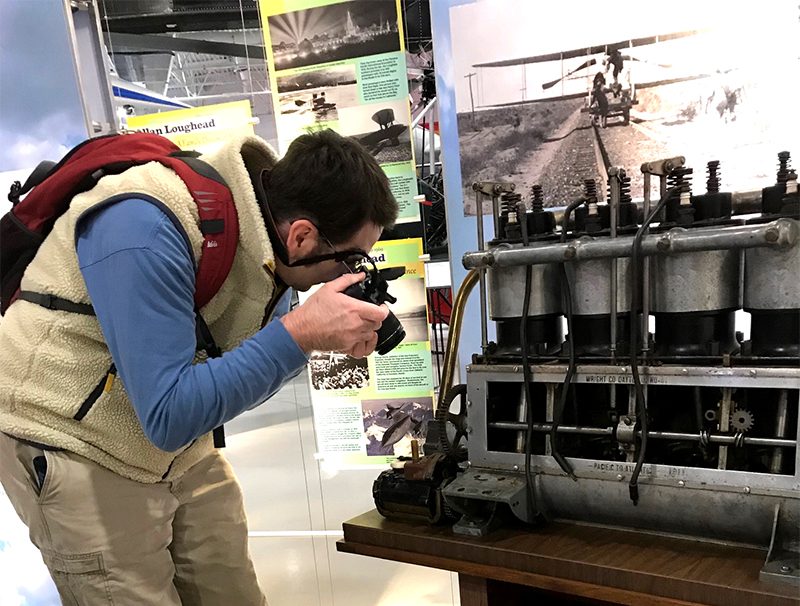
Ryan Ridgely
- Scientific Illustrator
- 3D X-ray Imaging Specialist
Email: ridgely@ohio.edu

I have been a Research Associate in the Witmerlab at Ohio University's Heritage College of Osteopathic Medicine for two decades. My professional research has been focused on the head anatomy of dinosaurs, specifically the brain and its surrounding soft tissues, which includes the balance and hearing organs. My output can be seen in the scientific literature, textbooks, and museum exhibits throughout the world.
I began 20 years ago with traditional illustration. Seeing that emerging 3D technologies would be the future of scientific illustration, I was fortunate to get in on the “ground floor” of working with and visualizing CT data as 3D models. The influence of a series of seminal publications is reflected today by researchers around the world still using blue and pink as the colors for brain and ear endocasts, respectively.

As a graduate student in Ohio University's School of Visual Communication, my goal has been to share my passion for understanding how things work, and how they've changed over time. This interest is the same, whether it's how the smallest cell functions, or how the largest machinery works. I want to show how things go together in a way that people can see for themselves, so thay they can build their own narrative. Understanding is the only cure for complacency.
One of my favorite non-biological stories is the evolution of aircraft. Unfortunately, a great deal of the oral history of these men and machines is quickly beginning to be lost to time. What we might assume would be well documented, is already disappearing. For example, surprisingly little is well known of the Wright Brothers' aircraft and engines beyond the famous 1903 Flyer, yet it was these subsequent flying machines that sowed the seed of aviation in Europe, which is where it truly blossomed. It wasn't until the United States entered the first World War that the US truly developed its own wings.

I have 14 years’ experience running and maintaining microCT scanners. I’ve performed mechanical maintenance and repairs on these systems. On the software side, I’m familiar with scanning parameters to build protocols for university communities, and I’ve performed data reconstruction through a variety of pathways, correcting for both beam hardening and ring artifacts.
From data to finished product, I’m familiar with a number of CT reconstruction packages. To up our game for both research and public outreach, I’ve years of continuing education coursework using Maya for rigging, animation, and rendering. ZBrush, for modelling and cleanup. Adobe CC for photography and media production. In addition, I have several years of coursework in UX design, HTML, CSS, Javascript, Bootstrap, and API integration.